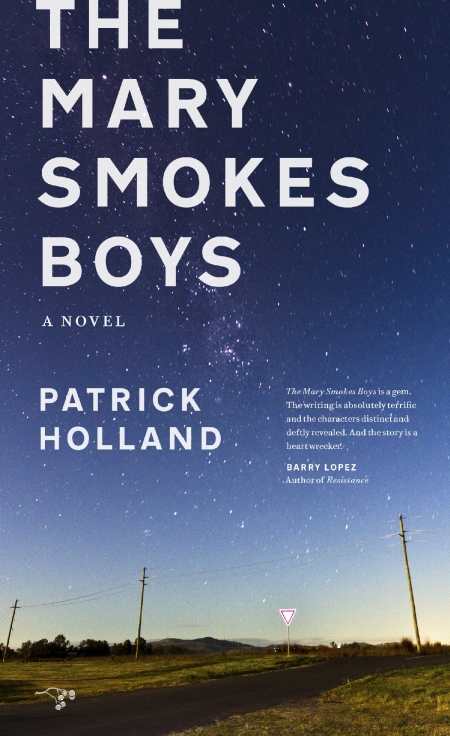
The Mary Smokes Boys
With his moving, moody novel, Holland ensures that one particular place, time, and people will not be entirely lost.
An award-winning novelist in his native Australia, Patrick Holland makes his way to America with a new edition of his liminal, haunting portrait of rural life in modern Australia, The Mary Smokes Boys. With a spare, stark style that unavoidably recalls Ernest Hemingway and Cormac McCarthy, Holland deliberately unfolds the unforgiving landscape of rural Queensland through the eyes of a grieving boy, his desperate companions, and his otherworldly sister.
Each carefully chosen word in Holland’s novel evokes a sense of loss, absence, and lack. We enter the life of the bleakly named Grey North as his mother dies giving birth to his sister, Irene. With his mother gone and his father available only on the rare occasions that he’s sober, Grey takes on parenthood duties in the “weatherboard cottage beached by an ocean of plain” that borders the remnants of the Mary Smokes river. This is Grey’s story, and the story of how he and his “wild boy” friends cope with their personal dramas in the final days of a dying way of life in the outback.
Holland’s writing style can take some getting used to but serves his purpose well. Largely unembellished, he describes most scenes with simple, observational language. While the dispassionate tone may keep some readers from engaging with the characters, it also precisely reflects the pitiless world of horse thievery and wild-dog hunting that Grey and his friends inhabit. These are people who don’t have a lot of room for emotion.
Now and then, however, Holland slips into a more lyrical, if no less bleak, style. To mark Irene’s age, for instance, Holland describes her mother’s abandoned garden: “The white flowers of a lemon tree fell on the wasted fruit of fourteen winters.” His descriptions of Irene tend to contain more emotion—she cries, trembles, and pleads, where the boys take action without much deliberation—and this seems fitting. Things take an abrupt, and violent, turn in the final scenes, recalling Hemingway’s “Nick Adams” stories and their surprising, graphic endings.
The Mary Smokes Boys is an evocative meditation on grief; from the moment readers lay eyes on the barren scrubland on the cover to their last moments with Grey and Irene, they will find themselves grieving for lost things, remembered through Holland’s unflinchingly honest storytelling.
Reviewed by
Sheila M. Trask
Disclosure: This article is not an endorsement, but a review. The publisher of this book provided free copies of the book to have their book reviewed by a professional reviewer. No fee was paid by the publisher for this review. Foreword Reviews only recommends books that we love. Foreword Magazine, Inc. is disclosing this in accordance with the Federal Trade Commission’s 16 CFR, Part 255.
